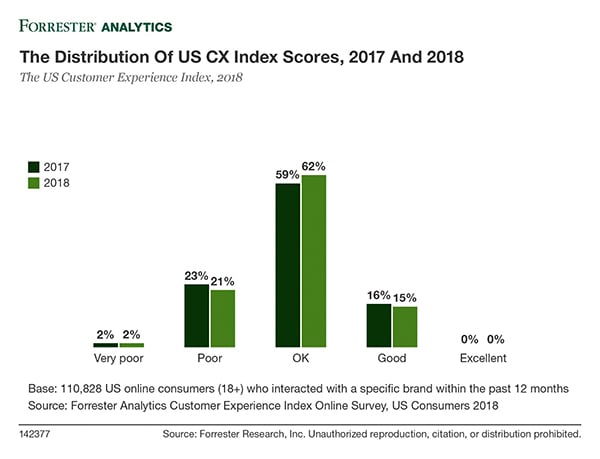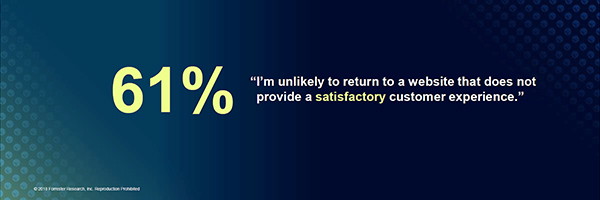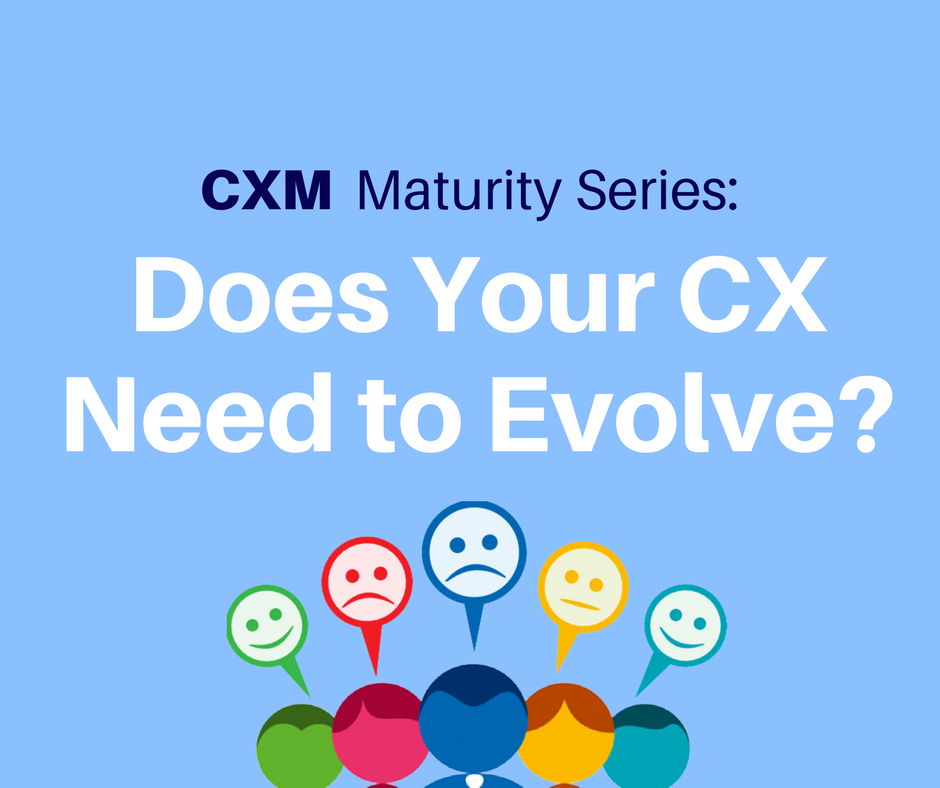Delivering a Seamless CX: Lessons from Forrester CX SF
Last week, we attended Forrester CX SF where research analysts and brands winning at customer experience spent two days diving into what it means to...
4 min read
Justine Lambros June 28, 2018

Last week, we attended Forrester’s 2018 CX NYC Forum. The two-day forum was filled with informative sessions held by Forrester’s customer experience (CX) analysts and executives from some of North America’s most well-known brands.
Harley Manning, VP, Research Director and founder of Forrester’s CX research practice, opened up the event presenting research from the firm’s 2018 Customer Experience Index for US brands.
“Progress on CX quality has stalled,” Manning stated.
He compared index scores over the last three years, revealing that not one brand has risen to the top of Forrester’s rankings and that the overall quality of customer experience in the US is at a near standstill. Most brands continue to deliver mediocre CX.

The results may have come as a bit of a surprise to a room full of CX professionals, but the results are proof that while a lot of brands are beginning to be more CX-oriented, there is still a long way to go.
Is it true that most brands are delivering “mediocre” customer experiences, or that expectations have become unrealistic? Is there a ceiling for CX excellence and where do we draw the line?
Manning challenged the audience to start making strategic changes that will allow customer experience to be their brand’s engine of growth. His opening remarks set the tone for many sessions that followed, with new research and tips to help CX pros expand and improve their existing strategies.
This conference was jam-packed with thought-provoking sessions. Here are three lessons we learned from stories told at the event that truly inspired us to think outside the proverbial CX box.
Maxie Schmidt-Subramanian, Principal Analyst at Forrester, began her keynote session with an analogy about home decor and customer experience.
Schmidt bought a house that was a fixer-upper. When she and her family first moved in, they spent time and money decorating the house to make it look good and feel more like a home. But eventually, they realized that the decor didn’t improve the functionality of the house. To make the house more functional, they needed to start renovations.
Many brands today are doing the same thing she did with her house, with their customer experience.
Stop decorating your CX and start renovating it. Make real, thoughtful changes to your CX strategy.
Creating a marketing campaign doesn’t mean you’re focused on CX. Adding a welcome sign to your website doesn’t mean you are delivering a personalized customer experience. Obsessing over improving your Net Promoter Score (NPS) scores can cause you to lose sight of why you want to improve it and how you are going to achieve this.
How do you start renovating? Begin by assessing the value your brand offers and then define a company-wide strategy that truly differentiates that value. Weigh the benefits vs. sacrifices of this strategy and the impact it will have on your network of employees, customers, and business. Make small changes starting from the core of your brand and rebuild your value network.
Forrester VP and Principal Analyst, Brendan Witcher’s keynote was a highlight of the event for us. Witcher began his keynote by asking the audience to close their eyes as he told a story.
Image it’s Saturday morning. You wake up and go downstairs to make breakfast, only to realize you have no food in the house and need to do your weekly groceries. You make a large list, head over to your favorite grocery store, but when you arrive, there are no grocery carts. You go inside and ask the manager where the grocery carts are, and he tells you, “We got rid of them because we couldn’t prove the ROI of a grocery cart.”
Witcher then asked the audience, “If your favorite grocery store got rid of grocery carts, would you continue to shop there?” No one raised their hand. Witcher has told this story and asked the same question to thousands and thousands of people and always received the same response.
He then asked a powerful question. “How many mistakes did it take for you to stop being a customer at this store?”
One.
Witcher used this story to demonstrate that products and services don’t matter. What matters is customer experience.

Brands need to stop saying “we want” and start saying “our customers want.” They need to start using numerous data sources to make business decisions. The shopping cart is a perfect example. Companies may not be able to prove the ROI of a grocery cart, but voice-of-the-customer data would indicate that customers value that as part of their experience.
Organizations have a long way to go when it comes to using data to make decisions to improve CX - but you must start somewhere if you want to remain competitive.
You don’t need to combine all of your data sources at once. Start out small and see what correlations you can discover by combining two data sources.
The third session that provided one of the most notable lessons at CX NYC was a deep dive session on health insurers, hosted by Forrester analysts Faith Adams and Ruth Steinberg. During the session, we learned that despite significant investments, health insurance ranks 15 out of 19 industries in Forrester’s Customer Experience Index.
The industry’s poor performance has to do with the work health insurers need to do to improve the “emotion” component of their customer experience. According to Forrester, CX quality is driven by three key areas:
Emotion is a key driver of advocacy, but health insurers are struggling to improve in this area. Executives from Banner Health, Blue Shield of California, and Highmark Health participated in a panel discussing how their organizations are using emotion to improve overall customer experience.
Dave Kriesand, VP Customer Experience at Banner Health, shared a great story about how they are becoming more customer-centric by thinking about the emotions of their customers.
Dave explained how they eliminated their many customer personas and replaced them with one new persona.
Sophia is Hispanic and married with two young daughters. She takes care of her in-laws, who have health issues of their own. All of her family members have names and stories of their own.
Every time Banner Health makes a decision or handles a situation they ask “how would Sophia feel about this?” If they think it would elicit positive emotions from Sophia, they know they are making a good decision.
They didn’t stop there. Banner Health cast an actress to play Sophia in a video about patient experience who visits the office now and then. The team gets really excited about seeing “Sophia.”
Without employee engagement and buy-in on your brand’s transformation to customer-centricity, you won’t be able to make real improvements to your customer experience.
This was our first time attending Forrester’s CX NYC show, and we will be going back. Between the research, stories, and lessons shared, we left with a wealth of new knowledge. The biggest takeaway was that brands have made progress putting CX top of mind, yet there is still a lot of work to be done when it comes to driving improvements to customer experience. There isn’t a one-size fit all approach, so find the best strategy that works for your organization.

Last week, we attended Forrester CX SF where research analysts and brands winning at customer experience spent two days diving into what it means to...

And just like that, another CX NYC conference has come and gone. Forrester’s 2019 event definitely didn’t disappoint. The conference was filled with...

Achieving great customer experience (CX) is becoming more and more challenging for multi-location businesses. Not only are these companies...